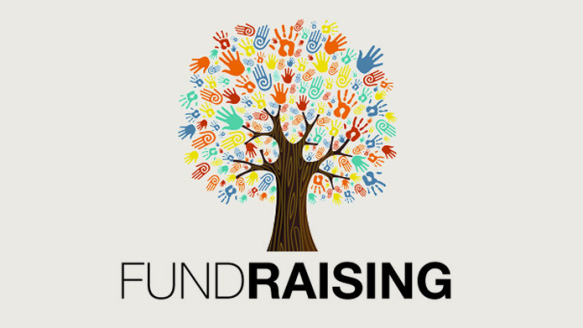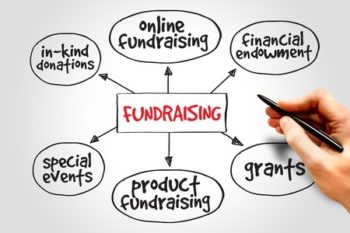Nonprofit Agency: Professional Solutions to Support Your Objective and Goals
The Role of Community Interaction in Nonprofit Fundraising: Building Lasting Relationships for Sustainable Assistance
Neighborhood engagement is progressively identified as a critical element of effective not-for-profit fundraising. The methods and approaches used to engage areas differ widely, elevating important inquiries concerning effectiveness and impact.
Comprehending Community Engagement
Community interaction is a crucial element of successful not-for-profit fundraising initiatives. Nonprofits should identify vital stakeholders-- such as neighborhood participants, local organizations, and various other companies-- to create efficient engagement strategies.
Effective area interaction is based on energetic listening and responsiveness to the requirements and rate of interests of the area. This procedure entails soliciting responses, comprehending community characteristics, and ensuring that the company's objective straightens with local concerns. Engaging the area can take various types, consisting of public meetings, volunteer possibilities, and partnership campaigns, each developed to motivate involvement and investment in the company's goals.
Furthermore, community involvement ought to be approached as a continuous dialogue instead of a single initiative. By cultivating an inclusive atmosphere where neighborhood voices are heard and valued, nonprofits can construct a strong structure for future fundraising endeavors. Inevitably, a deep understanding of neighborhood interaction empowers companies to produce authentic links that improve their general performance and sustainability.
Advantages of Solid Relationships
Solid partnerships developed via community interaction yield many benefits for not-for-profit fundraising efforts. Primarily, these connections foster trust fund and reliability, essential components in motivating benefactors to add. When possible fans see a nonprofit proactively associated with their area, they are most likely to count on its goal and influence.

Furthermore, these connections facilitate efficient communication. Nonprofits can leverage their links to share stories of effect, updates, and requires, making sure that advocates continue to be educated and involved. This open line of communication not just enhances bonds yet likewise urges referral promotion, increasing the nonprofit's reach.
Last but not least, strong area ties can attract brand-new partners and enrollers. People and services are much more likely to align with organizations that demonstrate meaningful area participation, providing extra resources and assistance that can substantially improve fundraising capabilities. Therefore, cultivating robust partnerships with community interaction is indispensable to a not-for-profit's long-lasting fundraising success.
Strategies for Reliable Involvement
Just how can nonprofits efficiently engage their areas to improve fundraising initiatives? Regular updates, engaging material, and calls-to-action can galvanize community passion and involvement.
Second, holding community occasions, such as workshops, volunteer chances, or fundraising drives, assists in in person communication, allowing nonprofits to showcase their effect and efforts. These events not try these out only increase funds yet additionally grow relationships and permit neighborhood members to involve directly with the cause.
Third, applying personalized interaction methods can enhance engagement. Tailoring messages to specific donor sectors based on interests and previous contributions cultivates a sense of belonging and investment in the organization's goal.
Finally, creating partnerships with local companies and community leaders can amplify outreach initiatives. Collective initiatives click over here now can improve visibility and trustworthiness, showing a cumulative commitment to the neighborhood's well-being. By integrating these approaches, nonprofits can develop long lasting partnerships that enhance fundraising efforts and drive lasting assistance.
Determining Involvement Success
While engaging the community is critical for effective nonprofit fundraising, gauging the effectiveness of these interaction initiatives is equally vital. Establishing clear metrics allows companies to evaluate just how well they are getting in touch with their audience and accomplishing their fundraising objectives. Secret efficiency indications (KPIs) such as donor retention rates, volunteer involvement degrees, and engagement on social networks systems provide substantial data for assessment.

On a regular basis assessing these metrics enables companies to pivot their methods when required, ensuring that area involvement stays aligned with their general mission. Moreover, sharing these outcomes with stakeholders fosters openness and builds depend on, encouraging further neighborhood participation. Eventually, a robust dimension framework not just notifies future fundraising campaigns however likewise strengthens the partnership between the nonprofit and its fans, laying the groundwork for sustainable success.
Study in Area Influence
Countless case research studies highlight the profound impact that area engagement can carry not-for-profit fundraising success. One noteworthy instance is the "Something to Continued chew on" initiative, where a regional food financial institution partnered with colleges and companies to host area suppers. These events not only increased funds however additionally promoted a sense of belonging amongst individuals, dramatically enhancing contributor retention prices.
An additional compelling case is the "Eco-friendly Spaces Job," which entailed neighborhood residents in the revitalization of urban parks. This effort not only gathered financial backing from neighborhood organizations but also cultivated a volunteer base that added to continuous maintenance and programs. The sense of ownership and pride among neighborhood members translated right into continual contributions.
In the realm of arts, the "Art for All" campaign successfully involved neighborhood musicians and clients to develop joint art installations, resulting in enhanced exposure and donations for a local arts not-for-profit.
These instances highlight that when nonprofits focus on area participation, they can develop long-term partnerships that boost fundraising initiatives, making certain lasting assistance and cultivating a lively neighborhood culture. Such instances demonstrate that area interaction is not merely a technique but a vital column of nonprofit success.
Conclusion
To conclude, neighborhood interaction is integral to the success of nonprofit fundraising initiatives. By promoting solid connections with regional stakeholders, organizations boost trust fund and credibility, bring about improved donor retention and loyalty. Applying efficient interaction methods and measuring their impact makes sure that nonprofits can prosper and adjust. Eventually, a durable foundation of neighborhood assistance not just amplifies fundraising potential however also grows a culture of collaboration, vital for achieving lasting business goals and maintaining meaningful effect.
Nonprofits have to determine essential stakeholders-- such as neighborhood members, neighborhood businesses, and various other organizations-- to create efficient interaction approaches.

In conclusion, neighborhood involvement is integral to the success of not-for-profit fundraising efforts.